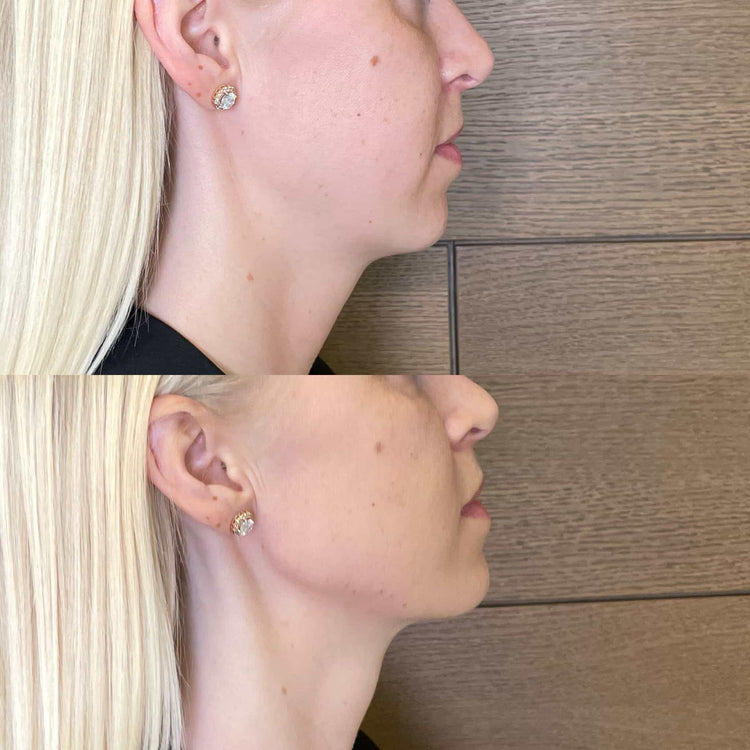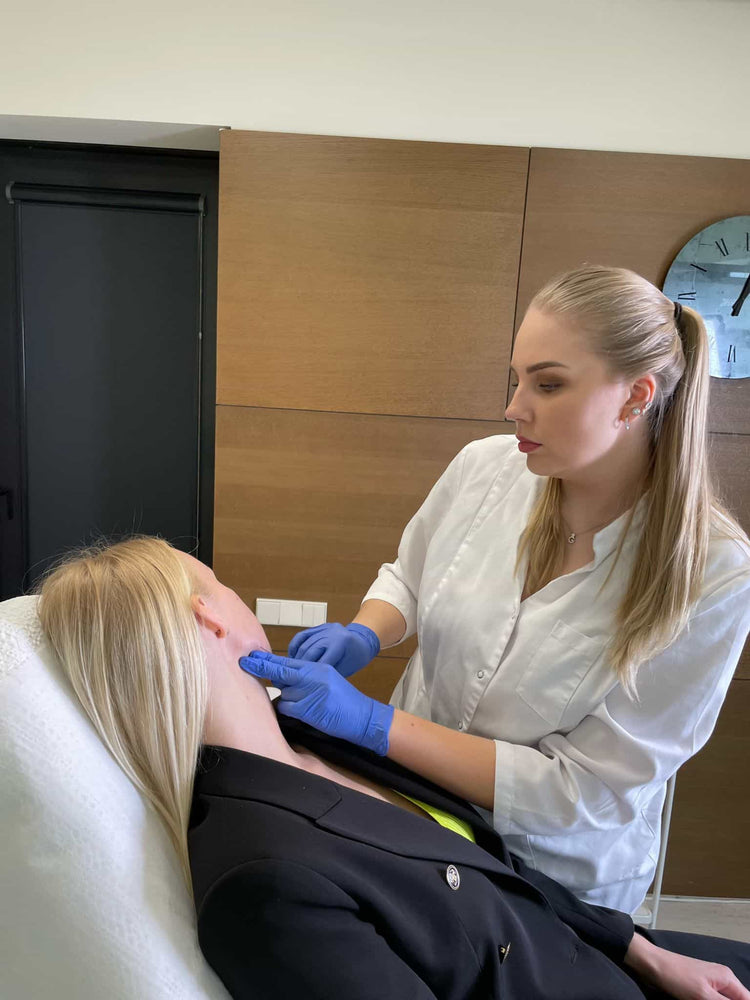Common Side Effects
When considering any medical procedure, it’s important to be aware of potential side effects. Jowl treatments, aimed at improving facial contours, are no exception. While many individuals experience positive outcomes, some may encounter common side effects during the recovery process.
Bruising
When considering any medical procedure, it’s important to be aware of potential side effects. Jowl treatments, aimed at improving facial contours, are no exception. While many individuals experience positive outcomes, some may encounter common side effects during the recovery process.
One of the most common side effects of jowl treatment is bruising.
- Bruising can occur in the treated area and may also extend to surrounding tissues.
- The severity of bruising varies from person to person and typically subsides within a few weeks.
- Applying ice packs and avoiding strenuous activities can help minimize bruising.
Swelling
Another frequent side effect is swelling.
Swelling in the treated area, as well as surrounding tissues, is normal after jowl treatment.
This swelling typically peaks a few days after the procedure and gradually subsides over the following weeks.
Redness
Redness is another common side effect of jowl treatments.
It usually manifests as a temporary flush in the treated area, which can extend to surrounding skin.
Redness often peaks within the first few days after the procedure and gradually diminishes over the subsequent week or two.
Pain and Discomfort
When considering any medical procedure, it’s important to be aware of potential side effects. Jowl treatments, aimed at improving facial contours, are no exception. While many individuals experience positive outcomes, some may encounter common side effects during the recovery process.
One of the most common side effects of jowl treatment is bruising.
- Bruising can occur in the treated area and may also extend to surrounding tissues.
- The severity of bruising varies from person to person and typically subsides within a few weeks.
- Applying ice packs and avoiding strenuous activities can help minimize bruising.
Another frequent side effect is swelling.
Swelling in the treated area, as well as surrounding tissues, is normal after jowl treatment.
This swelling typically peaks a few days after the procedure and gradually subsides over the following weeks.
Redness is another common side effect of jowl treatments.
It usually manifests as a temporary flush in the treated area, which can extend to surrounding skin.
Redness often peaks within the first few days after the procedure and gradually diminishes over the subsequent week or two.
Less Common Side Effects
Beyond common side effects like bruising, swelling, and redness, some individuals may experience less frequent occurrences after jowl treatment.
Numbness or Tingling
Numbness or tingling sensations in the treated area can occur as a result of temporary nerve involvement during the procedure. This typically resolves within a few weeks as the nerves recover.
Asymmetry

Beyond common side effects like bruising, swelling, and redness, some individuals may experience less frequent occurrences after jowl treatment.
Numbness or tingling sensations in the treated area can occur as a result of temporary nerve involvement during the procedure. This typically resolves within a few weeks as the nerves recover.
Asymmetry, meaning one side of the face appearing slightly different from the other, is another possibility. It’s important to note that slight asymmetry can be normal in facial features, and jowl treatment aims to minimize this rather than eliminate it completely.
Infection
Beyond common side effects like bruising, swelling, and redness, some individuals may experience less frequent occurrences after jowl treatment.
Numbness or tingling sensations in the treated area can occur as a result of temporary nerve involvement during the procedure. This typically resolves within a few weeks as the nerves recover.

Asymmetry, meaning one side of the face appearing slightly different from the other, is another possibility. It’s important to note that slight asymmetry can be normal in facial features, and jowl treatment aims to minimize this rather than eliminate it completely.
Less common but potential complications include infection.
Signs of infection may include redness, swelling, pain, warmth, or discharge from the treated area. If you experience any of these symptoms after jowl treatment, it is crucial to consult with your doctor promptly for proper diagnosis and treatment.
Rare Side Effects
Beyond common side effects like bruising, swelling, and redness, some individuals may experience less frequent occurrences after jowl treatment.
Numbness or tingling sensations in the treated area can occur as a result of temporary nerve involvement during the procedure. This typically resolves within a few weeks as the nerves recover.

Asymmetry, meaning one side of the face appearing slightly different from the other, is another possibility. It’s important to note that slight asymmetry can be normal in facial features, and jowl treatment aims to minimize this rather than eliminate it completely.
Less common but potential complications include infection.
Signs of infection may include redness, swelling, pain, warmth, or discharge from the treated area. If you experience any of these symptoms after jowl treatment, it is crucial to consult with your doctor promptly for proper diagnosis and treatment.
Allergic Reactions
Beyond common side effects like bruising, swelling, and redness, some individuals may experience less frequent occurrences after jowl treatment.
Numbness or tingling sensations in the treated area can occur as a result of temporary nerve involvement during the procedure. This typically resolves within a few weeks as the nerves recover.
Asymmetry, meaning one side of the face appearing slightly different from the other, is another possibility. It’s important to note that slight asymmetry can be normal in facial features, and jowl treatment aims to minimize this rather than eliminate it completely.
Less common but potential complications include infection.
Signs of infection may include redness, swelling, pain, warmth, or discharge from the treated area. If you experience any of these symptoms after jowl treatment, it is crucial to consult with your doctor promptly for proper diagnosis and treatment.
In rare instances, allergic reactions can occur following jowl treatment.
These reactions may range from mild itching or skin rash to more severe anaphylactic responses. It is essential to inform your doctor about any allergies you have before undergoing the procedure. If you experience any signs of an allergic reaction, seek immediate medical attention.
Scarring
In rare instances, allergic reactions can occur following jowl treatment. These reactions may range from mild itching or skin rash to more severe anaphylactic responses. It is essential to inform your doctor about any allergies you have before undergoing the procedure. If you experience any signs of an allergic reaction, seek immediate medical attention.
Another rare side effect is scarring. While most jowl treatments are performed using techniques that minimize the risk of scarring, some individuals may experience noticeable scarring.
Factors that can influence the likelihood of scarring include skin type, individual healing abilities, and adherence to post-treatment instructions.
To minimize the risk of scarring, it is crucial to follow your doctor’s recommendations regarding skincare, sun protection, and wound care.
If you have any concerns about potential scarring, discuss them with your doctor before undergoing jowl treatment.
Hematoma Formation
Beyond common side effects like bruising, swelling, and redness, some individuals may experience less frequent occurrences after jowl treatment.
- Numbness or tingling sensations in the treated area can occur as a result of temporary nerve involvement during the procedure. This typically resolves within a few weeks as the nerves recover.
- Asymmetry, meaning one side of the face appearing slightly different from the other, is another possibility. It’s important to note that slight asymmetry can be normal in facial features, and jowl treatment aims to minimize this rather than eliminate it completely.
Less common but potential complications include infection.
Signs of infection may include redness, swelling, pain, warmth, or discharge from the treated area. If you experience any of these symptoms after jowl treatment, it is crucial to consult with your doctor promptly for proper diagnosis and treatment.
In rare instances, allergic reactions can occur following jowl treatment.
These reactions may range from mild itching or skin rash to more severe anaphylactic responses. It is essential to inform your doctor about any allergies you have before undergoing the procedure. If you experience any signs of an allergic reaction, seek immediate medical attention.
Another rare side effect is hematoma formation.
This involves the collection of blood beneath the skin, which can cause swelling and discoloration in the treated area. Hematomas are more likely to occur if there is excessive bleeding during the procedure or if blood vessels are damaged.
If you notice signs of a hematoma after jowl treatment, such as significant bruising, swelling, or a change in skin color, consult your doctor immediately. They may need to drain the hematoma or take other measures to minimize its severity.
Enquire today about our non-surgical jowl treatments at It’s Me & You Clinic with Dr. Laura Geige.
- Gummy Smile Treatment – Gum Contouring Near Norwood, Surrey - September 30, 2025
- Filler In Front Of Ears In Brookwood, Surrey - September 28, 2025
- Is Nasal Flaring An Emergency? - September 27, 2025
